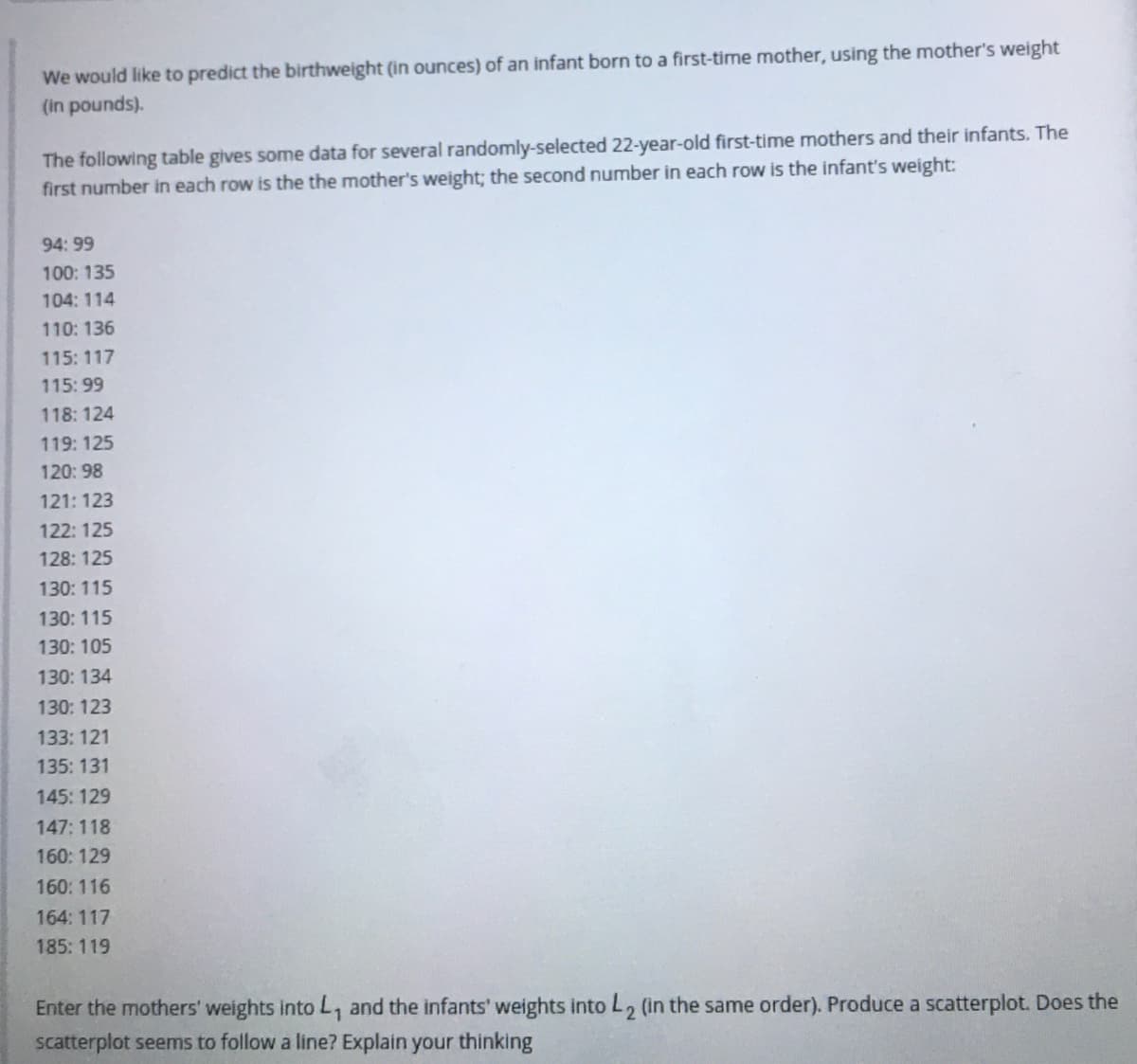We would like to predict the birthweight (in ounces) of an infant born to a first-time mother, using the mother's weight (in pounds). The following table gives some data for several randomly-selected 22-year-old first-time mothers and their infants. The first number in each row is the the mother's weight; the second number in each row is the infant's weight: 94: 99 100: 135 104: 114 110: 136 115:117 115: 99 118: 124 119: 125 120: 98 121: 123 122: 125 128: 125 130: 115 130: 115 130: 105 130: 134 130: 123 133: 121 135: 131 145: 129 147: 118 160: 129 160: 116 164: 117 185: 119 Enter the mothers' weights into L, and the infants' weights into L, (in the same order). Produce a scatterplot. Does th scatterplot seems to follow a line? Explain your thinking
Unitary Method
The word “unitary” comes from the word “unit”, which means a single and complete entity. In this method, we find the value of a unit product from the given number of products, and then we solve for the other number of products.
Speed, Time, and Distance
Imagine you and 3 of your friends are planning to go to the playground at 6 in the evening. Your house is one mile away from the playground and one of your friends named Jim must start at 5 pm to reach the playground by walk. The other two friends are 3 miles away.
Profit and Loss
The amount earned or lost on the sale of one or more items is referred to as the profit or loss on that item.
Units and Measurements
Measurements and comparisons are the foundation of science and engineering. We, therefore, need rules that tell us how things are measured and compared. For these measurements and comparisons, we perform certain experiments, and we will need the experiments to set up the devices.

Step by step
Solved in 2 steps with 1 images






